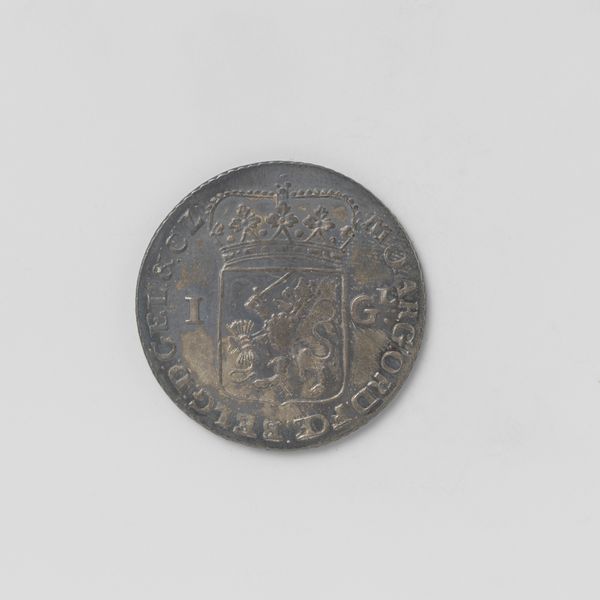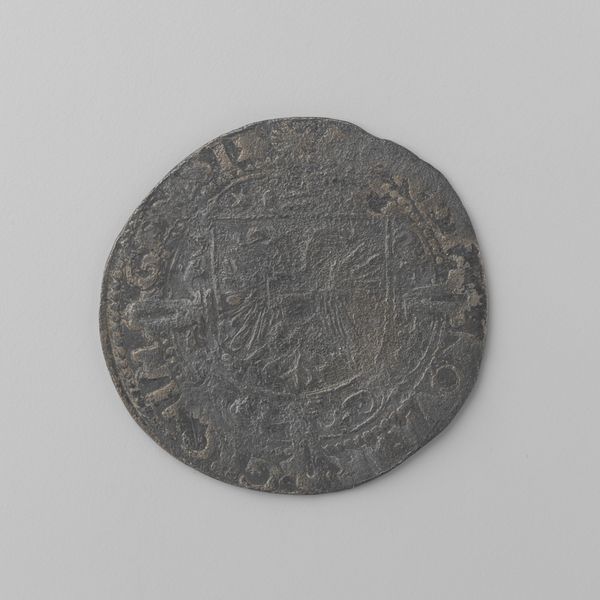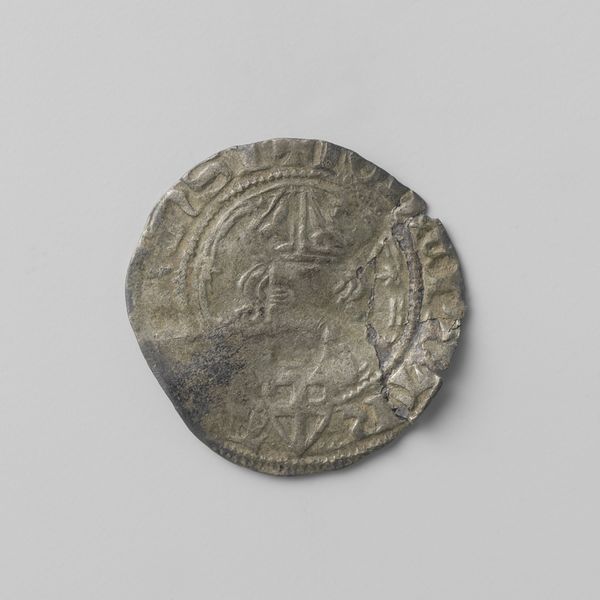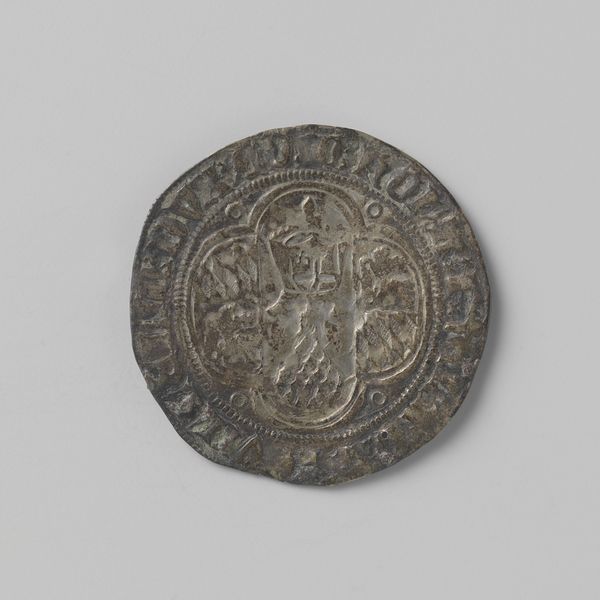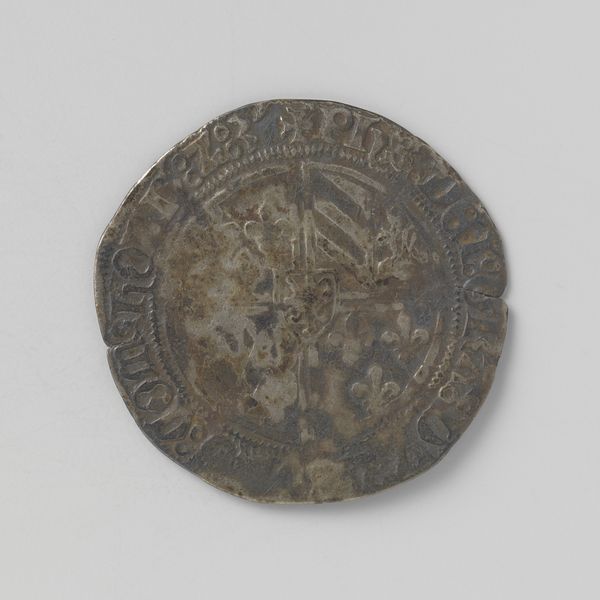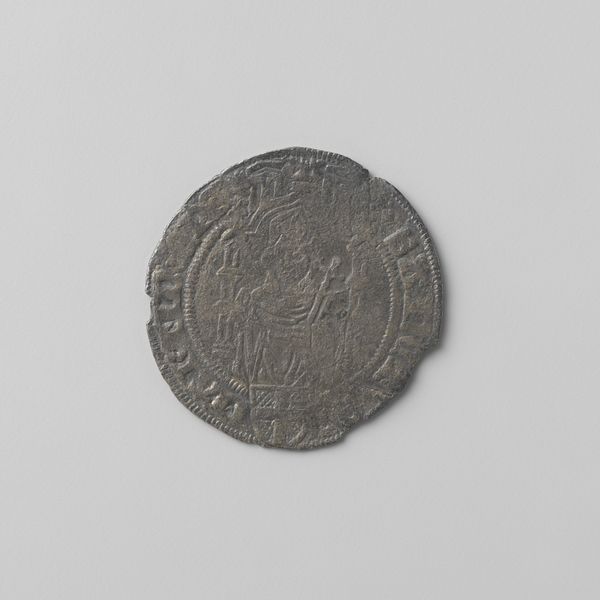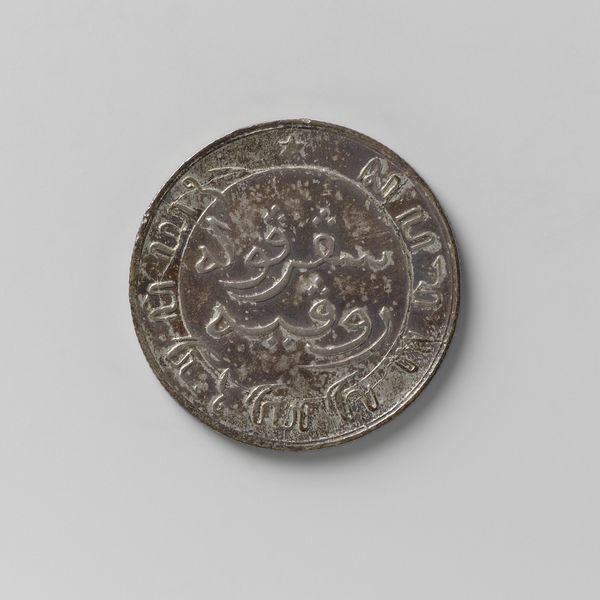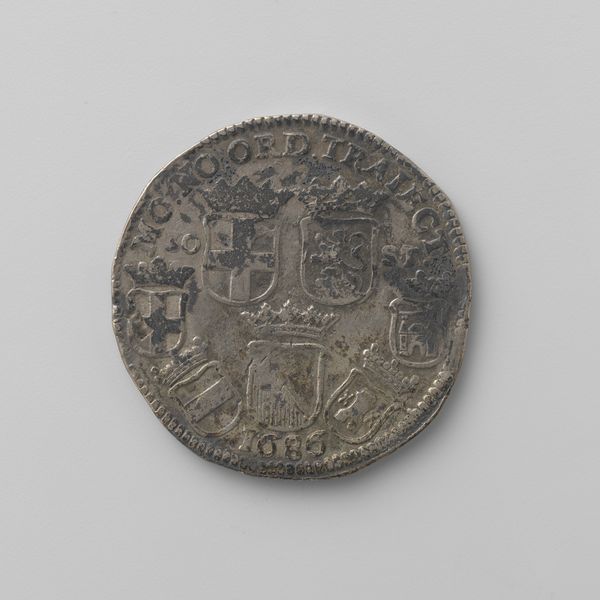
metal, relief, sculpture
#
portrait
#
round shape
#
natural stone pattern
#
circular oval feature
#
medieval
#
3d printed part
#
rounded shape
#
metal
#
relief
#
round design
#
curved arc
#
3d shape
#
geometric
#
sculpture
#
metallic object render
#
round circular shape
Dimensions: diameter 2.1 cm, weight 1.42 gr
Copyright: Rijks Museum: Open Domain
Editor: Here we have a metal relief sculpture, a "Reckheimse duit" coin of Ferdinand van Aspremont-Lynden, dating back to sometime between 1636 and 1665. The detail is incredible for such a small object. What are your thoughts when you look at this, what stands out to you? Curator: What immediately strikes me is not simply its aesthetic qualities, but its socio-political narrative. This isn't just a coin; it’s a statement of power and identity in a tumultuous historical context. It embodies feudal power structures through the figure of Ferdinand van Aspremont-Lynden. Have you considered the implications of him, as the Heer van Reckheim, commissioning his own coinage? Editor: I hadn't, not specifically, but that does add another layer to it. The very act feels like asserting some kind of dominion, beyond just economic. It’s more like… propaganda? Curator: Precisely! Consider the visual language: the heraldry, the portrait. These aren't neutral images. They are carefully constructed to project authority, legitimize rule, and perpetuate a specific identity. Think about how this coin might have circulated. Who would have handled it, and what messages would it have conveyed to them? Who benefited, who suffered? Editor: So, the coin is both a functional object and a form of visual communication aimed at maintaining social hierarchies? Curator: Absolutely. We have to ask ourselves: whose story does this coin tell, and whose story does it erase? Its very existence reinforces a power dynamic. How can we use this object to deconstruct that dynamic and explore the lives and experiences of those marginalized by it? Editor: I’m beginning to see how looking at art through a historical lens can really challenge our assumptions. I never thought I could learn so much about societal power structures from one coin. Curator: And that's the point! Art, even something as seemingly mundane as a coin, is always embedded within broader networks of power, identity, and social relations. Always question the narrative!
Comments
No comments
Be the first to comment and join the conversation on the ultimate creative platform.
